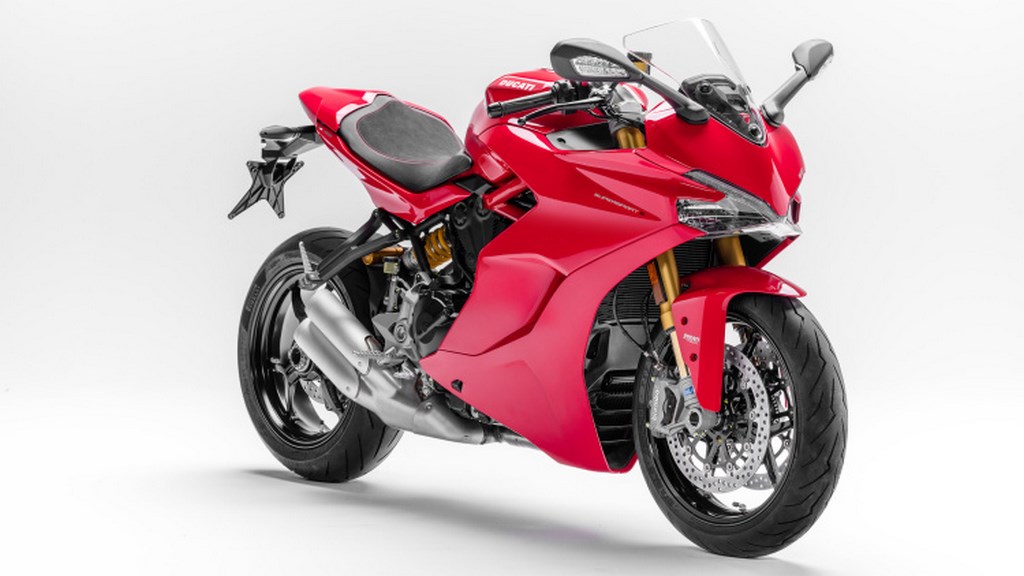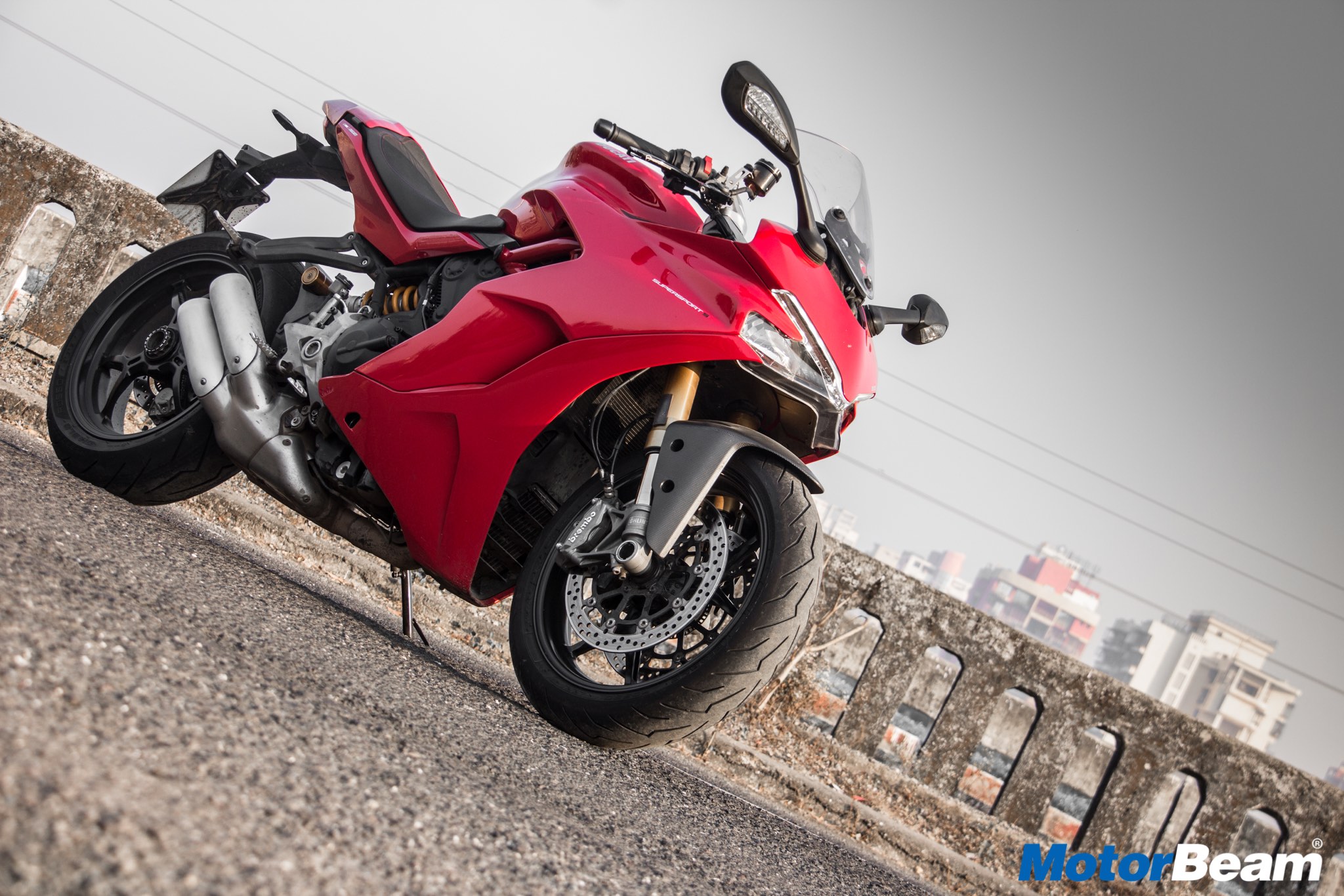Not the most powerful this Ducati, but it can surely pull from the start line!
Performance – A 937cc, Testastretta, 11°, L-Twin engine may sound big, but the SuperSport S only makes 110 BHP at 9000 RPM. The motor seems to be tuned only for mid-range performance while the redline kicks in somewhere at around 9500 or 10,000 RPM. Because of this, the gearbox might feel like a short-shifting one, but it is not. The engine is quick to jump to the redline and the DQS helps in clutchless up-shifts. However, I did experience a few false-shifts which turned out to be lack of effort in shifting properly on my behalf. That being said, a little extra effort needs to be put into quick shifting of gears. The DQS also comes enabled with clutchless downshifts which of course only worked in a certain rev-range; not a flaw, but just because of how a gearbox works.
The Testastretta engine is well tuned for low and mid-range torque
The 937cc mill is capable of only 110 BHP of power and 93 Nm of torque
Want to go all out on the Ducati SuperSport S? Well, the 110 BHP motor puts out 93 Nm of torque peaking in at 6500 RPM. The numbers are anything but impressive. We recorded a top speed of 250 km/hr which is where the engine just sort of maxed out and took its own sweet time to get there. The 0-100 km/hr starts were quick though, with the front wheel lifting off a little bit in the first gear, nothing scary. The DQS allowed perfect shifts and the second ton comes up in practically no time. At the same time, this engine is capable of cruising at 50 km/hr even in third gear without any knocking. The gearbox and the engine are indeed very well tuned for urban riding. The three riding modes, that can be fully customizable do not really seem to have much that differentiates them. The touring and the sport mode kind of feel the same to ride with, whereas the urban mode has the same initial grunt but a restricted horsepower setting.
The engine has ample grunt for high speed highway riding
Out on the highways, it’s fun to cruise at 120 km/hr even in fourth gear where the revs are just below 5000 RPM. At these speeds, fuel efficiency is what surprised me. Constant speeds of 100-120 km/hr yield an impressive 23 km/l roughly speaking, which is how much the Yamaha R3 gave us in our tests. In the city, the bike returned figures close to 18 km/l depending on the riding style and the kind of traffic you’re stuck in. To sum it up, the engine isn’t the most exhilarating one you’d experience. However, Ducati seems to have worked on the refinement of their L-Twin engines since this one was much better sounding and the NVH levels were more or less of what could be classified as acceptable.
The SuperSport is extremely easy to ride
Dynamics – Like mentioned earlier, the Ducati SuperSport S has pretty much sports-tourer like ergos. At a kerb weight of 210 kgs, the bike sounds like it is heavy, but once you get riding it, all sort of cancels out. The motorcycle feels really compact for its class and handles like a quarter-litre while riding around town. The not-so-aggressive stance makes it easy to zip around urban highways and it feels quite flickable too. The fully adjustable Öhlins suspension was well set up for a balanced performance.
The dynamics are balanced for regular and sport-touring use
The SuperSport is fun to ride not because of it’s engine but because how it handles
Riding ths SuperSport S on the highway is an absolutely wonderful experience. The windblast is not too much thanks to the easy to use adjustable windshield. Overtakes are easy with the DQS and a strong mid-range. Brakes have a good initial bite but because of lack of petal discs, high-speed braking feels like it could’ve been better. The Pirelli Diablo Rosso III tyres did well over highway and city roads. One thing distinctive about the bike is the way you feel once you mount on to it. During all the time of testing, not once did I feel that the motorcycle is capable of losing control when it came to handling around corners. Of course, the SuperSport is no superbike, it, however, does possess a lot of character to have fun at a race track. With the SuperSport S package, the motorcycle feels quite track ready for an average rider.



